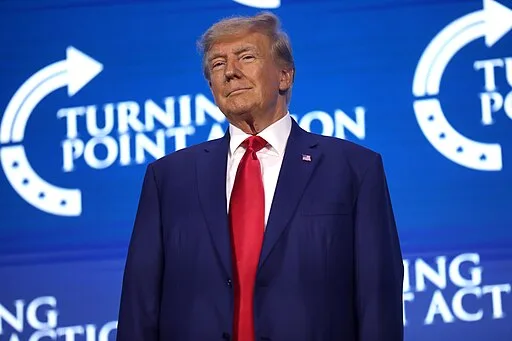In a bid to curb drug trafficking and migration, President-elect Trump vows to impose a 25% tariff on imports from Canada and Mexico, alongside a 10% tariff on China, setting the stage for potential trade wars
In his latest move to fulfil campaign promises, President-elect Donald Trump has announced plans for sweeping tariffs targeting the United States’ three largest trading partners: Canada, Mexico, and China. The tariffs, designed to address issues such as fentanyl trafficking, migration, and trade imbalances, could have profound implications for global trade relations and economic stability.
Trump, who is set to assume office on January 20, 2025, outlined his aggressive stance on trade during a post on Truth Social, where he pledged to impose a 25% tariff on all imports from Canada and Mexico. This action, he said, would continue until both countries took more stringent measures to curb drug trafficking, especially fentanyl, and migrant crossings at the U.S. border.
The move to impose tariffs on Canada and Mexico comes amid growing concerns over the flow of illegal drugs and the ongoing migrant crisis at the southern border, issues that Trump has consistently highlighted during his political career. However, this plan raises questions about the future of the United States-Mexico-Canada Agreement (USMCA), a free trade deal that Trump renegotiated with both countries in 2020. The proposed tariffs could be seen as a direct challenge to the principles of free trade enshrined in the agreement, potentially igniting trade wars with two of the U.S.’s closest neighbours.
Embed from Getty Images“I will sign all necessary documents to charge Mexico and Canada a 25% Tariff on ALL products coming into the United States, and its ridiculous Open Borders,” Trump stated, reiterating his “America First” economic agenda that aims to prioritise U.S. industries and reduce reliance on foreign goods.
The tariffs on Mexico and Canada would significantly impact cross-border trade, which totals hundreds of billions of dollars annually. Both countries are major trading partners with the U.S., and such steep tariffs would likely drive up the cost of goods and disrupt supply chains. The potential for retaliatory tariffs from Canada and Mexico could further escalate tensions, destabilising established trade networks across North America.
In addition to the tariffs on Canada and Mexico, Trump also revealed plans for an “additional 10% tariff” on imports from China. This is in line with his ongoing criticisms of China’s trade practices and its economic influence on the global stage. The 10% tariff, which would be added to any existing tariffs, could impact a wide range of Chinese goods entering the U.S. market, further complicating relations between the world’s two largest economies.
China, which has long been the target of U.S. trade policies under Trump, responded to the threat of new tariffs with a firm stance. A Chinese government spokesperson stated, “No one will win a trade war,” signalling the country’s opposition to further escalation in economic hostilities. China has already faced a series of tariffs and trade restrictions from the U.S. in recent years, and additional tariffs could severely impact the flow of goods, further straining the already fragile U.S.-China trade relationship.
The proposed tariffs, if enacted, would mark a sharp shift in global trade dynamics, potentially igniting a new round of trade wars that could destabilise markets and disrupt international commerce. Economists have warned that such aggressive trade policies could lead to higher prices for consumers and businesses, while also affecting global supply chains that rely on smooth trade flows between countries.
As Trump prepares to take office, his trade policies remain a central focus of his “America First” agenda. These tariffs are just one part of his broader strategy to reshape U.S. economic relations with the rest of the world, putting pressure on foreign governments to comply with U.S. demands on issues such as border security and trade imbalances.
